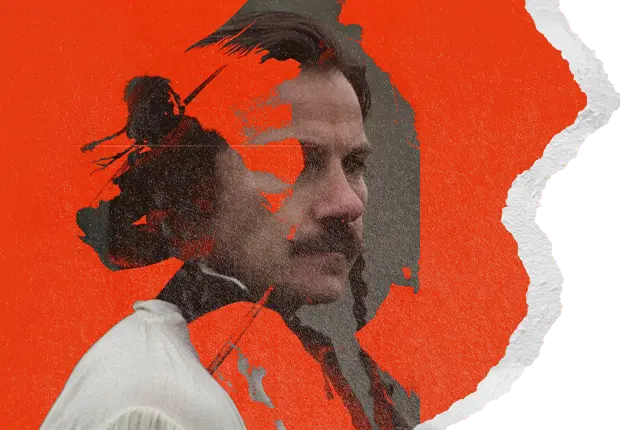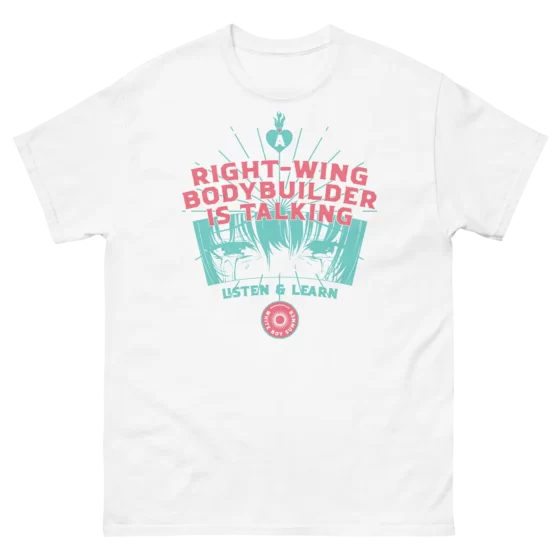Duelling: How the Aristos Settled Their Differences
Imagine it: You just shot someone directly through the heart with a pistol. The police arrive to the sight of you standing over the lifeless corpse of your opponent, gun still smoking in hand. Handcuffs are opened, but your bros — as well as those of your opponent — intervene; they merely tell the cops that the shooting was a mutually-agreed upon battle… everyone shrugs their shoulders (except the dead guy, of course) and goes home.
For obvious reasons, the act of dueling in modern times is hard to fathom. The weapons, ideals, and aesthetics of the honorable men that engaged in this behavior simply do not exist anymore. Many would say that the disappearance of potentially deadly single combat is a good thing, and largely it is, for the spilling of blood over differences considered unsubstantial by today’s standards seems a waste; but more than just the loss of life has been prevented.
Dueling is a centuries-old practice of settling a dispute with another man. It’s an overwhelmingly Western phenomenon and was usually fought with swords. For this reason, as well as several others, the art of dueling was practiced mostly by the aristocracy. Only men of high birth were typically trained in man-on-man swordsmanship or fencing, as opposed to the unit-cohesion-oriented tactics of lay foot soldiers. Furthermore, a life of wealth afforded the ability to attain precision-made blades as well as the extensive training and time required to master them; this same concept applies to the knights and jousters of the medieval era.
Another aspect that made dueling so aristocratic was the fact that there were so many rules to follow. After an infringement was made, the offended would challenge the wrongdoer to a duel; I have no idea how popular glove-slapping ever was, but you get the idea. The summons was made so the affronted party could retain his honor, and the challenged usually needed to accept to keep his as well. To prevent outrageous claims culminating in the needless loss of life, the duelists would select “seconds”, who were generally close friends or acquaintances. The seconds would meet and discuss the nature of the offense, if it even warranted dueling in the first place, and if so, set parameters. Rather than outright calling off the pending confrontation, if seconds determined the misdeed was less than deadly, it was often customary to establish rules for the duel in a way that made the loss of life highly unlikely. With edged weapons, this could mean simply drawing blood (think of the knife fight in Rebel Without a Cause); in the age of pistols, shots would occur at far distances. The duelists voluntarily exposing themselves to danger allowed them to save face against their opponent. By the 18th Century, most of these guidelines were codified in the Irish Code Duello, a document standardizing the rules and regulations of dueling.
None of these points are made to suggest that anyone of social stature below the rank of nobility didn’t duel, because they most certainly did; but their methods were considered to be cruder. In fact, one of the great equalizers of dueling was the usage of pistols. Writing on American frontier life in the 19th Century, Bil Gilbert has much to say on the introduction of hand-held firearms in his biography on Joseph Walker, Westering Man. Gilbert describes the necessity of a strong, burly build for pioneers trailblazing the North American continent. In addition to expected reasons like being able to carry lots of equipment, a large frame also came into good use when fighting men, whether they be savages or other frontiersmen. The pistol negated this requirement for success on the frontier. Any thin-framed weakling could make his way in the wild, so long as he knew how to shoot. Gilbert states,
“In an earlier time it was unusual for a man to bother carrying a handgun principally because the models available were slow to load, inaccurate and inclined to misfire. They were mostly favored by formal duelists, but this was more of an interest of eastern gentlemen and their imitators than of western frontiersmen. The latter were just as hot-tempered and violently inclined, but their combats tended to be hand-to-hand ones in which, as one commentator reported, ‘The acme of accomplishment was to throw one’s antagonist down and, catching the fingers under the jaw or in the hair, use this fulcrum to gouge the eyeball out onto the cheek with the thumb. If this could not be done, the fighter tried to bite off a nose or an ear.’”
He goes on to say,
“When it came into civilian use after the Civil War, the six-shooter was in a sense a democratic innovation since it offered homicidal opportunities to almost anyone would could afford or steal a gun and had the desire to become expert with it… carpetbaggers and psychopaths of the temper of Billy the Kid became killers and terrorists as they could not and would not have been if they had to grapple with their victims.”
These sentiments gave rise to the gun-slinging, quick-draw killers of Western lore; all, to say the least, quite different from the “eastern gentlemen” referenced by Gilbert, following their rules and retaining their honor. This is the era most think of when considering duels — 19th Century men in top hats and frock coats, standing back-to-back, walking ten paces, turning, flamboyantly aiming their pistols, and firing.
There are many famous examples: 7th President of the United States Andrew Jackson killed a man in a duel — Jackson was also shot in the chest — and was rumored to have fought several more. Founding Father Alexander Hamilton was notoriously gunned down by his political rival, Vice President Aaron Burr. Some of the best instances are found in the officer’s corps of the U.S. military. The heightened sensibilities of the Victorian era were so outrageous that between the War of 1812 and the American Civil War, more naval officers died of dueling than combat or occupational dangers at sea.
One of the most principled cases can be found between U.S. Navy Captain Oliver Hazard Perry and Marine Corps Captain John Heath, whom Perry publicly slapped in the face over the latter’s alleged incompetence in command during the Second Barbary Coast War. Though Perry had to accept Heath’s eventual challenge to retain his honor, he had no intention of firing on a man he deemed unworthy to die; Perry wrote and signed a refusal to fire a shot in anger at Heath, sealed it, and handed it to his second, fellow naval officer Stephen Decatur. Perry attended the duel, took the field, walked his paces, turned, and stood defiantly motionless as Heath fired. Luckily, the ball missed. All present waited for Perry to shoot, who instead holstered his weapon; Decatur approached Heath, handed him the letter and asked if his honor had been satisfied. Though the Code Duello forbade “dumb firing” (wasting a shot to intentionally avoid killing a foe) and referred to it as “children’s play,” Perry’s premeditated refusal to shoot a man he considered respectable enough to live (but still slap-worthy) while still subjecting his body to death brought manly honor to an entirely new level.
Though Stephen Decatur’s name is barely known today, if you look closely, you’ll notice high schools, roadways, and parks named in his honor. He was the youngest man to reach the rank of Captain in the American Navy, doing so at twenty-five years of age after leading a boarding party against a captured ship during the First Barbary Coast War, an act that Lord Horatio Nelson referred to as “the most bold and daring act of the Age.” Decatur achieved further glory when he married the Mayor of Norfolk, Virginia’s daughter, a woman of such beauty she was once courted by the very same man that killed Hamilton as well as Napoleon’s brother; she rejected them both but capitulated to the woos of the daring man of the high seas. During the War of 1812, Decatur skippered the USS United States and raked the HMS Macedonian in the naval version of a duel; he actually took her as a prize, sailing triumphantly back to the Eastern Seaboard.
This amazing career was juxtaposed with the lackluster ones of Commodores James Barron and William Bainbridge. Both men lost ships under embarrassing circumstances; Barron’s was during the Chesapeake–Leopard affair without firing a single cannon and Bainbridge relinquished the USS Philadelphia to North African pirates, this was the very same ship Decatur raided while Bainbridge sat out the conflict in a Barbary prison. Both men had an axe to grind with Decatur, a man many saw as a future President of the country. Barron eventually worked up the courage to challenge Decatur to a duel and the young Captain made the poor decision of choosing Bainbridge as his second, who allegedly, out of career jealousy, set the parameters of the encounter to make death likely. Both men were injured and Decatur ultimately succumbed to his wound.
Though great men cut down in their prime by dueling is sad and, in most cases, unnecessary, something else has been lost since the practice’s abolishment. The disappearance of dueling directly coincides with the erasure of a true aristocracy throughout the West. Writing on the demise of aristocracies and the rise of meritocracies and their pseudo-war on high culture, Helen Andrews states,
“Unlike meritocracies, aristocracies can put actual content into their curricula—not just academically, but morally. Every aristocracy has an ethos, and a good ethos will balance out the moral faults to which that aristocracy is prone. The upper-class WASPs who constituted “the Establishment” in twentieth-century America were very rich, so they instilled in their children a Puritan asceticism. The Whig grandees of eighteenth-century Britain, who were the opposite of ascetic, cultivated a spirit of usefulness to check their tendency toward idleness.”
In Notes on the Death of Culture, Mario Vargas Llosa echoes this sentiment when he juxtaposes the notion of contemporary specialists to, “the elites, the cultured minorities who, as well as building bridges across the different areas of knowledge — science, literature, the arts and technology — also had a moral influence, be it religious or secular.” Though, on the surface, these points seem to have nothing to do with killing someone over a disagreement, we can take the current lack of moral, aristocratic guidelines and examine the detriments of their absence in martial action.
Imagine the reservation a doctor would have in casually prescribing hormone blockers to a pre-teen if there were the threat of a father challenging pistols as a result and widespread shame if the challenge were not accepted. Would politicians so brazenly advocate for suicidal policy if there was a crazy-eyed, Andrew Jackson-esque figure in the opposing wing, eagerly waiting to plant a musket ball in their chest? Our deranged ruling class can get away with murder because mutually-agreed upon attempts at murder have been outlawed.
Today, this responsibility has exclusively been delegated to the state. Only governmental authority can decide who lives and who dies. Research has been able to corroborate this. In “Going postal: State capacity and violent dispute resolution,” authors Jeffrey Jensen and Adam Ramey correlated decreasing rates of dueling and laws prohibiting the act with an increase in institutional state presence, specifically by examining the spread of post offices. They state,
“Given the duel’s prevalence as a method of dispute resolution, its decline over the 19th century could reflect either a decrease in the number of disputes or in the propensity to use violence. The rapid rise of civil litigation in American courts over the 19th and 20th Centuries, respectively, suggests that a secular decline in disputes cannot explain the eventual disappearance of dueling. Another possibility is that the cultural changes caused social norms regarding the importance of honor to diminish. The presence of a culture of honor, however, could certainly be endogenous to a society’s institutional quality.”
Bottom line, the more power the state holds, the less likely it is for men to settle disputes in an organized and honorable-yet-dangerous way. Furthermore, increases in state power seem to have less of an effect on diffusing unorganized, chaotic violence—an all-too-common occurrence in name-your-apocalyptic American urban center with police forces that rival the standing armies of small nations. Robbery-driven murder, senseless beatings, “drive-bys,” and sucker-punches are now the default type of manly encounter as opposed to two men striding onto a battlefield in adherence to a code of honor. Jensen and Ramey exemplify this point when, referencing 19th Century dueling statistics, they state,
“(T)he expansion of state capacity is strongly associated with a substantial reduction in the rate of dueling. For Southern states with few post offices, the dueling rate is about 2 per 100,000 residents; for non-Southern states, it is just over 0.5. As state capacity increases, the gap between the two shrinks to near zero. The differences are even starker when comparing new and old states. New states with low state capacity have a recorded decade dueling rate nearly equivalent to the contemporary homicide rate in New York City (my emphasis).”
Ironically, there seem to have been more risk takers when the stakes were so much higher and the likelihood of getting challenged or killed by a peer was more prevalent. This is partially because in such ruthless-yet-moral times, the fearless were at the forefront of society, actively moving the needle of civilization; as opposed to today, where the bug-man is in control since there’s no real fear of someone challenging you to a duel or, at a minimum, beating the shit out of you. Instead of leading from the front, as a true aristocracy once did, our contemporary meritocratic-managerial despots lead from the sidelines, sequestered from danger in their gated cul-de-sacs and shielded from their policy that wreaks havoc on have-nots.
Today, the people running the West have become experts at exporting violence to lower classes as well as throughout the globe. Whether it’s an Appalachian bumpkin shooting teenage towelheads in the Middle East or inner-city Magic Americans murdering each other as well as innocent bystanders in unprecedented numbers, it’s all a byproduct of oligarchical policy that put these people in violent situations or places they should have never been in the first place. If only our oligarchs could be challenged to a field at dawn; if only.
































